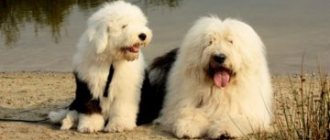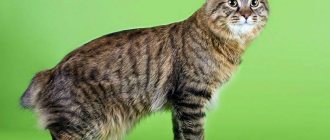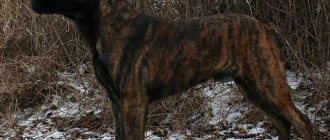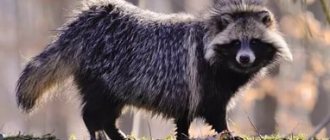At first glance, it may seem that a cat with a short tail is the result of human actions. However, the bobtail is a native animal and its small tail is the result of the intervention of Mother Nature herself. The tail of these interesting cats is the subject of discussion among many cat lovers, and owners of any type of bobtail are ready to talk about them endlessly. It is believed that each short ponytail has only its own, individual, unique features; if you describe each ponytail in detail, it turns out that each of them is unique.
Common signs of bobtail cats
There are several types of bobtail cats on earth today. They are all united according to several main characteristics:
- A short small tail measuring approximately 2 to 12 centimeters;
- Sufficiently long (longer than the front) and strong hind legs;
- Quite a low timbre of voice;
- No need to mark territory (unless two competing cats live in the same apartment);
- Muscular physique.
It is also worth noting the special character that distinguishes all cats of the breed: they are all fearless, well adapted to life in the wild, and able to stand up for themselves. But at the same time they have a devoted, almost dog-like heart. They become attached to the owner, and not to the place, they love him with all their cat soul. They lend themselves very well to classical training, the “fetch” command is easy to execute, and these amazing cats feel quite comfortable on walks, even if the owner walks his pet on a leash.
Health
Bobtails have fairly good health. Currently, no genetic diseases have been identified. However, some breeders note that the absence of a tail can be the cause of inflammatory processes in the anus and rectal prolapse. Therefore, it is extremely important to periodically examine the animal for redness or cracking in the anus. Otherwise, all types of bobtails require the usual preventive vaccinations and antiparasitic measures for any cat.
The life expectancy of bobtails is quite high. They live for about 15 years, but with proper care they can live longer.
The longest-livers among bobtails, and cats in general, are Mekongs. Their lifespan is 20–25 years.
Kurilian Bobtail
Kurilian bobtails, true to their name, were found in the wild on the Kuril Islands. The place of residence influenced the appearance and physique of the smoker. The cat is distinguished by a rather severe-looking appearance: medium-length thick hair, a large head, wide cheekbones, a muscular, well-developed body, ears tilted forward, an arched back and a croup slightly raised due to the long hind limbs.
In the wild, a cat obtains food on its own, is an excellent rodent hunter, and an excellent fish catcher. Colors can be varied, with only a few species being exceptions to the standards. The tail of the Kurilian Bobtail cannot be straight. A straight tail is considered a breed defect, either very short or long (longer than 12 centimeters).
Despite its completely wild appearance, at home, a representative of this breed is an extremely friendly, affable, devoted animal. He loves affection, but not at the request of the owner, but only at his own request.
Does not tolerate coercion, violently protests against forced hugs or stroking.
But, having approached for a portion of the owner’s tenderness, he hopes to receive it in full, even with too much. He will never climb into his arms, but with pleasure he will lean back against his owner’s leg, he will purr in his gut, demonstrating in every possible way his complete pleasure. If a Kuril short-tailed cat lives in the house, there will never be mice or rats there; the Kuril will hunt until it has eliminated all the rodents in its possessions.
Two subspecies of "Kurilians"
The above characteristics must be maintained in all representatives of “smokers”. But according to the length of their coat, there are two options - long-haired bobtail and short-haired. The former should have a medium-length coat, a dense undercoat, a so-called “collar” in the neck area, “pants” in the area of the croup and hind legs. In the latter, the undercoat is not very developed, the fur is short and delicate, lying close to the body.
Sometimes there are cats that resemble a lynx in color. Needless to say, how desirable such specimens of the Kurilian Bobtail breed are. The price for them is always higher, especially if there are tassels characteristic of a lynx on the ears. In nurseries for kittens it ranges from 400 to 1000 USD. You can buy a kitten from private individuals for $50, but there is no guarantee of the purity of the breed.
Karelian Bobtail
The Karelian bobtail is smaller in appearance and more graceful than the Kurilian. His head is more elongated, shaped like a triangle, his muzzle is quite narrow, there are no cheeks, there are only slightly convex whisker pads. The ears are large and vertical; the outer line of the ear seems to continue with the line of the head. Karelians come in short-haired and medium-haired varieties. The tail is from 4 to 13 centimeters. An individual distinctive feature of this type of bobtail: the hair on the tail is always longer than on the entire body, which is why the pom-pom effect occurs. Also, the Karelian tail can be straight, and not just broken. Unlike the Kurilian bobtail, the Karelian has a straight back without an arch. The types of colors are very numerous, the exceptions are exactly the same as for the Kurilian Bobtail.
The character of this short-tailed handsome man is very friendly and accommodating. In their natural environment, Karelian cats live in a pride, like lions, so they are simply forced to find a common language with all their neighbors.
The quality of the voice is amazing.
This cat sings as if a taiga bird is singing; experts from Germany even call Karelians “Tweeting cats.”
This cat will never yell at its owner if he needs something. But demonstrating your desire by gently touching it and then showing the direction of movement is very easy.
Skif-tay-don
The Skif-Tai-Don variety of bobtail appeared in Rostov in the 90s. At one time, the breed received good reviews from its owners. This is a short-tailed dwarf or toy bobtail, similar in color to the Mekong. The main difference between them is the size. This tailless cat looks like a kitten even as an adult. Its weight ranges from 0.9 kg to 2.5 kg. The cat's fur is short, without undercoat. Color: Siamese with different shades.
Like all bobtails, the Skiff Tay-Don is devoted to its owner, following on his heels like a puppy or a small child. The baby is kind and affectionate and will become a friend to the whole family. Unfortunately, the breed is on the verge of extinction; kittens are difficult to find for sale. The fact is that few offspring are born in a litter, and not all babies survive. The lifespan of adult cats is about 10 years. Currently, active work is underway to restore the breed.
Japanese Bobtail
This cat is large (can weigh up to 14 kilograms), has an athletic build, a fluffy short tail and an appearance full of grace and elegance. According to ancient Japanese legend, a cat's tail is a repository of troubles, sorrows and vices. Accordingly, the absence of a tail in a cat entails all sorts of joy, happiness and prosperity. In Japan, Japanese bobtails, specifically cats, are called Maneki Neko (Hello Cat), in images the cat often has its front right paw raised up, as if in greeting, and also has a cute fluffy tail of a chrysanthemum-like appearance.
If this cat is frozen in some pose, then she clearly looks like a porcelain figurine, her coat is so neat, just hair to hair. The color, like many bobtails, can be any color (again, with the exception of just a few colors), but tortoiseshell colors with fiery red elements and white spots are traditional. Old descriptions of the breed give an idea of Japanese short-tailed cats as white cats with spots of red and black (mi-ke). It is believed that the white Japanese bobtail is a carrier of the gene for different eyes, the color of one is blue, the other is golden.
The Japanese have a distinctly triangular head, a long nose, and a clearly defined jawline. Well-drawn cheekbones protruding forward, high-set wide ears with small interesting tassels, large round eyes.
The Japanese Bobtail cat is curious, very active, tactful, and easy to communicate with. Energy simply pours out of all their limbs. This cat, if deprived of its movement, begins to show an explosive character, demonstrate dissatisfaction and misbehavior in every possible way.
Therefore, the cat is recommended to be kept with active families; she is simply prescribed long walks on a leash, active games with all sorts of moving and hanging toys.
It is advisable for owners to acquire scratching posts and special cat climbing frames. In gratitude for this, the owner will receive a cheerful, smart, active friend who can keep company on a walk, become a reliable playmate for children, a universal favorite and spoiled child. Japanese cats really do not like loneliness, do not tolerate it well, and yearn for human society.
History of the breed
The breed has a long history: the first images of a cat with a pompom-shaped tail date back to the first century AD. We are talking about the paintings on the walls of the Gotokuji Temple in Tokyo. By the way, the famous figurines of a cat with a raised paw, which is believed to bring good luck, are traditionally depicted with a small tail, which means it is none other than a Japanese bobtail.
The Japanese Bobtail is depicted in many old oriental prints.
According to legend, the breed appeared due to the fact that their tails were specially cut off to prevent them from turning into monsters. In fact, with artificial amputation of the tail vertebrae, the genetic anomaly cannot be fixed; it can only be a natural mutation. Most likely, cats born with the shortest tail received some advantages in the struggle for survival (it was harder for enemies to catch and kill them), as a result, short-tailed individuals more actively interbred with each other, which contributed to the consolidation of the Jb allele gene.
Maneki-neko is a traditional figurine, also known as the "Money Cat" or "Luck Cat", depicting a Japanese Bobtail
Until the 1960s, Japanese bobtails were found only in the Land of the Rising Sun. Single individuals, of course, were exported to Europe and the USA, but they were not engaged in special breeding. It was only in 1968 that the first non-Japanese cattery for cats of this breed was formed - its founder was the American Elizabeth Frere. The first CFA breed standard was approved in 1971. The FIFe officially recognized the Japanese Bobtail in 1990.
By the way, initially American and European associations recognized only shorthaired Japanese bobtails. Long-haired individuals were rejected and not allowed to exhibit. Fluffy short-tailed cats were officially recognized only in 1993.
American Bobtail
The American Bobtail cat breed (also called Yankeebob) is not related to other short-tailed breeds. They originated in America as a result of a gene mutation that turned into the highlight of the breed. The American Bobtail is a fairly large animal with a powerful body and a developed chest. The American has a flat back, with relief of the shoulder blades, which protrude slightly, and the paws are large, muscular, and round in shape. A square, wide head with prominent cheekbones, a clearly defined forehead, a strong chin, a medium nose, medium ears set wide with rounded tips. The coat can be either short or long, of any color.
The American cat has a very good-natured character, he is a wonderful companion, a loyal friend and a very smart pet with some dog-like habits. He will gladly bring his owner a toy or prey in the form of a caught mouse, but will never refuse to lie in the arms of any family member, while he will purr loudly and generally demonstrate in every way how happy he is, being in the company of a gentle, caring comrade .
Varieties by tail length
The tail of the most common “moustache” consists of 20-26 caudal vertebrae. With mutation, this amount decreases sharply. Depending on the final length, the following varieties are distinguished:
- rampi – 0 vertebrae;
- riser – 1-3 vertebrae, noticeable only with short hair;
- Stumpy – 4-8 vertebrae;
- longs, or tails, are close to the usual ones.
In cats without tails, the last 2 options are considered disadvantages. For show breeds, the preferred length is within 4 cm. Longer varieties are accompanied by tuberosity and knobbiness.
Mekong (Thai) Bobtail
The Mekong Bobtail (the old name of the Thai Bobtail breed) is a cat whose origin is covered in the legend of the sacred Thai animal. These cats existed back in the days when countless and innumerable treasures were kept in the Buddhist temples of Ancient Siam. These cats guarded the Siamese princesses, accompanying the beauties everywhere. While bathing, Thai high-ranking girls took off their jewelry and hung their guard cats on the broken and twisted short tails, from which they could not fall and get lost.
Mekong Bobtail cats resemble their Siamese friends: the same wedge-shaped head, only with rounded shapes, the same slanting large almond-shaped eyes of a piercing blue color. And, most importantly, it is a unique color-point color of various species.
The hind legs of this type of bobtail have a distinctive feature - the claws on them do not retract inside the pads, so a light tapping sound is heard when walking.
A characteristic behavioral feature of the Mekong Bobtail is a clear imitation of dog manners. This doesn't just show up in games. During a walk, the cat will behave completely like a dog: walk next to the owner, demonstrating complete obedience, and in case of danger, he will certainly rush at the offender.
But during the breeding and raising of offspring, an amazing distribution of responsibilities will be observed, not typical of other breeds. After giving birth to kittens, a bobtail cat feeds the babies and minimally cares for them. But the cat takes on the main functions of raising the heirs: he licks them, teaches them all sorts of wisdom and behaves like a real father of the family. In addition, the Mekong Bobtail cat, having created a family with a cat, behaves completely atypically for cats; he remains faithful to his cat, unless a person forces him to mate with another partner.
Breeding
To knit bobtails, you should adhere to the following recommendations:
- At the time of mating, the cat should be in 1-2 heats. Moreover, she should not be younger than 1 year, since before this period her body is not yet fully formed. The cat must also be at least 1 year old. The optimal age is one and a half years.
- At least one partner must already be experienced in this matter, so that the mating is not disrupted by the confusion of both animals.
- Both partners must be healthy, vaccinated and dewormed 14 days before this day.
- You should not wash the cat before mating, so as not to deprive her of the natural smell that attracts the cat so much.
- The meeting should be scheduled on the cat’s territory so that he feels like a master and does not waste time adapting.
- Mating is prescribed on the 2nd–3rd day of estrus. The cat should be left with the cat for 3-5 days.
The peculiarity of bobtails is that they are prohibited from crossing with cats of other breeds. You should also keep in mind that when choosing a partner, you need to pay attention to the length of his tail. If a cat’s tail reaches 8–12 cm in length, then a cat’s tail should be much shorter - this results in offspring with a tail from 3 to 8 cm.
Typically, pregnancy and childbirth proceed without any special features. But if the owner is inexperienced, it is better to play it safe and invite a veterinarian to attend the birth.
Other types of bobtails
Oriental Bobtail - bred in Great Britain, is experimental, named after the oriental color.
Snow Bob - also got its name because of its color, reminiscent of the Alaskan lynx.
Oohee-bob - obtained as a result of mating a Siamese cat and a Manx (tailless cat), has a bi-color or color-point color.
The toy bobtail has a toy size, like a kitten, and absolutely childlike mischievous behavior.
Intelligence
In terms of intelligence capabilities, the Kurilian Bobtail breed is a very amazing breed.
Reviews from owners repeatedly confirm the extraordinary intelligence and intelligence of their pets. So, they don’t have to repeat ten times what the potty is for, that the sofa is not intended for sharpening claws, and the curtains are not hung for climbing on the ledge. “Kurilians” understand from the first time what is possible and what is not.
The second interesting feature is their conversation. Scientists believe that all cats are capable of pronouncing individual sounds and even words. This confirms the fact that representatives of different breeds meow differently. For example, bobtails pronounce the “m” in “meow” quite clearly. They can also squeak, clatter, bleat like a goat and growl like real predators.
They can also follow commands, almost like dogs, especially the “fetch” command. You can play with the “smoker” for hours, throwing him a wire or a stick. He will run after it, take it in his teeth and bring it to the owner. True, for this the cat must want it himself. Many bobtails can raise their paw while sitting. The Japanese are sure that such a gesture from a cat attracts good luck to the house.
Photo
Features of care
Kurilian Bobtails are very hardy and strong cats, so they rarely cause problems for their owners.
However, in order for your pets to always feel good, you need to pay special attention to their nutrition. It is not recommended to feed them natural foods and canned food at the same time because this upsets the balance of the gastrointestinal tract. Kuril Bobtail kittens must receive cottage cheese, boiled yolk and vitamins.
In the future, if you decide to feed your cat natural products, you need to choose food that he could get for himself in the wild. That is, include more fish and meat, especially poultry. Of course, all food must be cooked.
If the choice is made on artificial food, the animal should only be fed good quality canned food.
The overwhelming majority of “Kurils” love to swim, and the owners have no problems with this. But there is no need to comb them, because their fur never gets tangled. If you still want to smooth his fur, you need to take a comb whose teeth are not electrified. Otherwise it will be unpleasant for the pet.
As necessary, you need to clean the cat's ears and wipe the eyes with a damp sponge. And of course, vaccinate.
Hygiene procedures
Caring for the Kurilian Bobtail is quite simple and does not require any outstanding skills. Bathing the animal is carried out as necessary and should be carried out no more than once every few months.
Of course, you can bathe your cat earlier if he is dirty. The procedure should be carried out in slightly warm water using a special shampoo for cats. It is strictly forbidden to use soap, shower gels and shampoos that are intended for humans.
Combing the animal is also easy and without any difficulties. It is necessary to brush your cat more often during the molting period.
In other cases, you can get by with 1 procedure per week. You can get rid of hair with a brush with frequent thin teeth or a glove for collecting hair.











